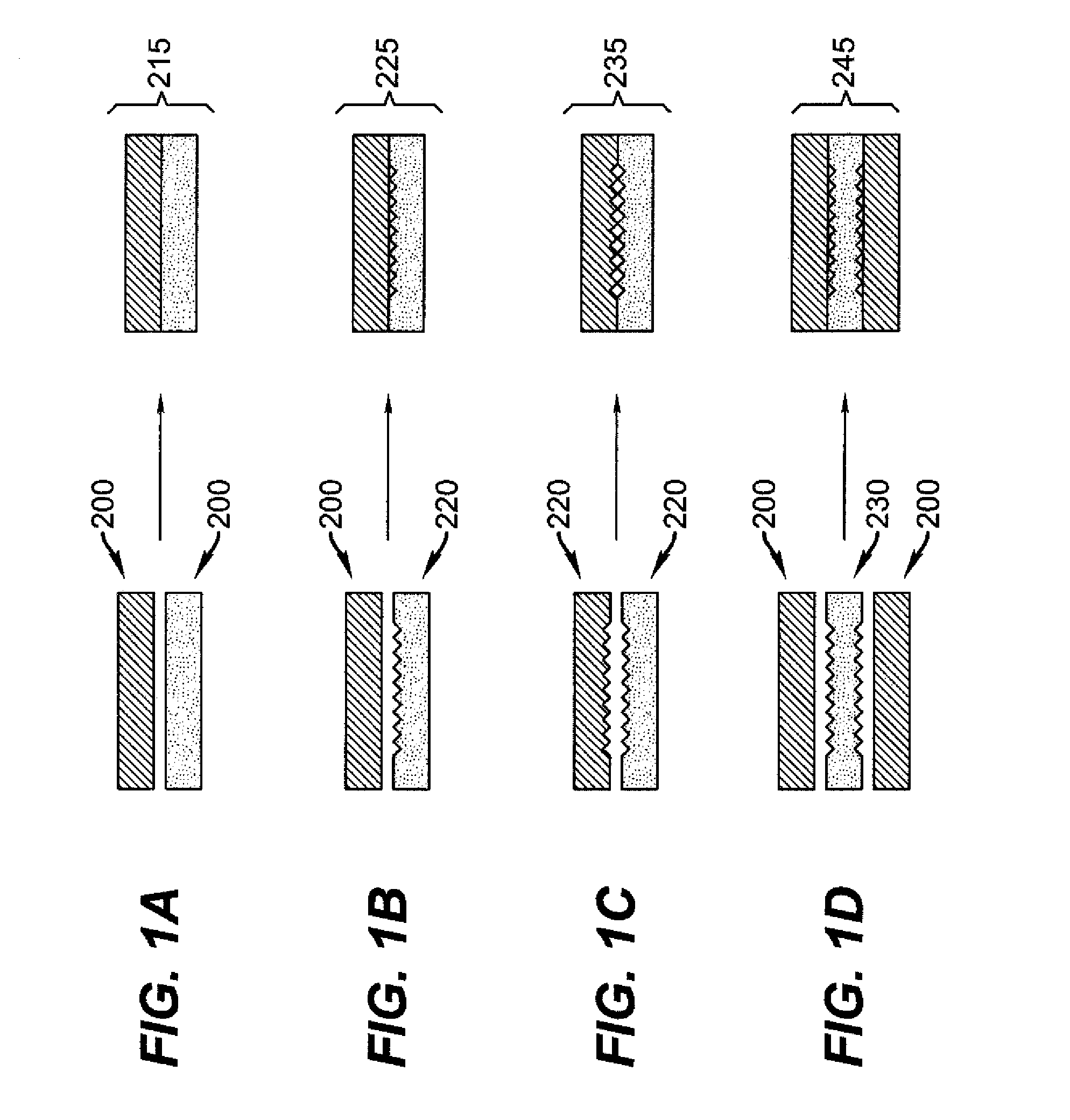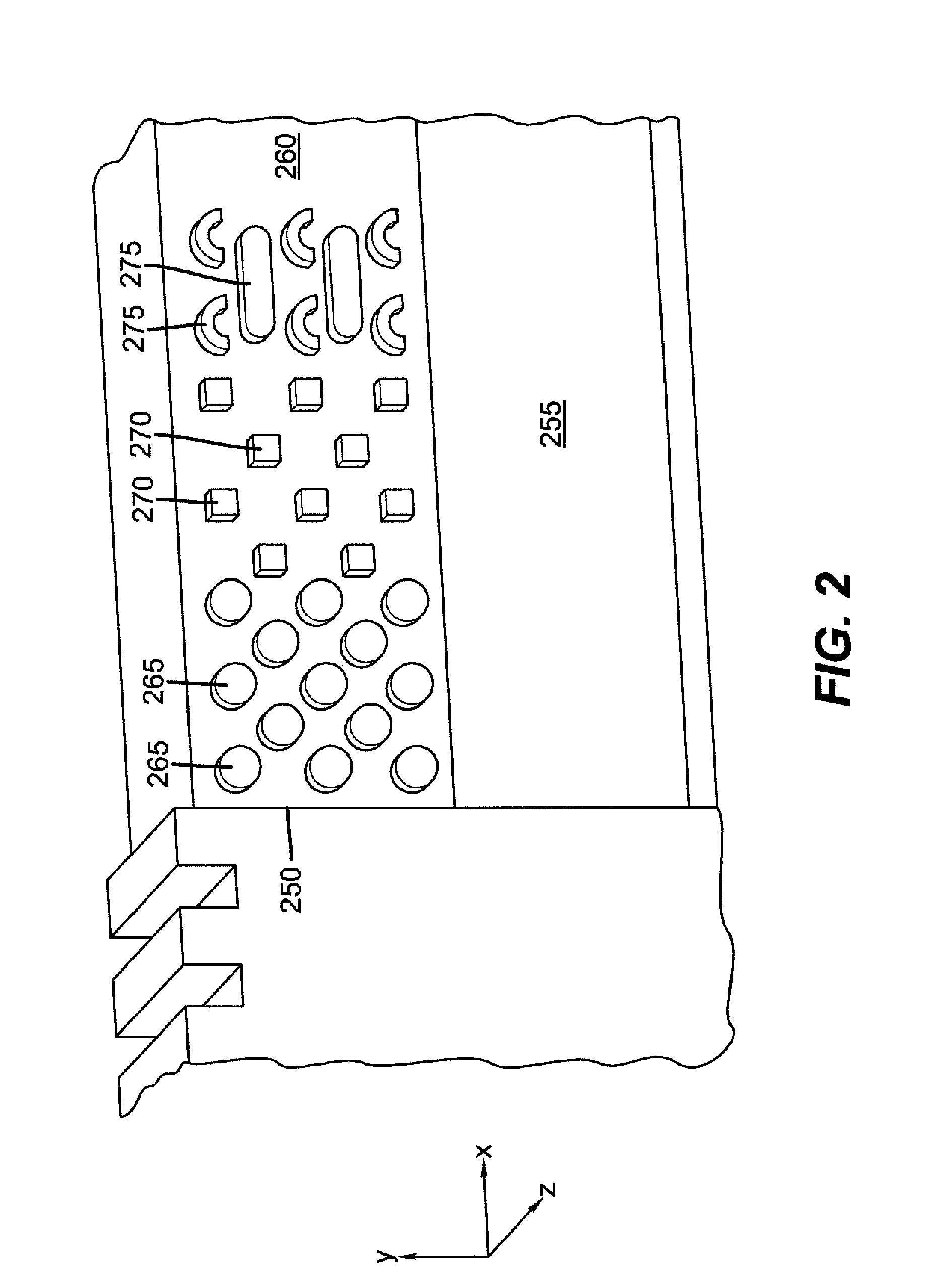Delivery device for deposition
a delivery device and deposition technology, applied in the field of diffusing flow, can solve the problems of large amount of chemical vapor deposition reaction, difficult to avoid some direct reaction of different precursors, and relatively insensitive to transport non-uniformities
- Summary
- Abstract
- Description
- Claims
- Application Information
AI Technical Summary
Benefits of technology
Problems solved by technology
Method used
Image
Examples
Embodiment Construction
[0082]The present description is directed in particular to diffusing elements forming part of, or cooperating within, an apparatus in accordance with the invention that delivers a fluid material to a substrate. It is to be understood that elements not specifically shown or described may take various forms well known to those skilled in the art.
[0083]More particularly, this invention relates to a means of diffusing a gas flow from a source channel so that it exits uniformly over a longer linear region. While this method may be applied to a broad range of technologies, one important application is in the field of spatially dependent ALD.
[0084]To suitably diffuse a flow of gas, an element that provides uniform flow backpressure over a linear region must be devised. In order to provide a restriction of flow, a channel needs to be created in which the open cross-section available for flow is very small. To provide suitable backpressures, the open cross-section for flow should have openin...
PUM
| Property | Measurement | Unit |
|---|---|---|
| area | aaaaa | aaaaa |
| separation distance | aaaaa | aaaaa |
| thickness | aaaaa | aaaaa |
Abstract
Description
Claims
Application Information
 Login to View More
Login to View More - R&D
- Intellectual Property
- Life Sciences
- Materials
- Tech Scout
- Unparalleled Data Quality
- Higher Quality Content
- 60% Fewer Hallucinations
Browse by: Latest US Patents, China's latest patents, Technical Efficacy Thesaurus, Application Domain, Technology Topic, Popular Technical Reports.
© 2025 PatSnap. All rights reserved.Legal|Privacy policy|Modern Slavery Act Transparency Statement|Sitemap|About US| Contact US: help@patsnap.com



